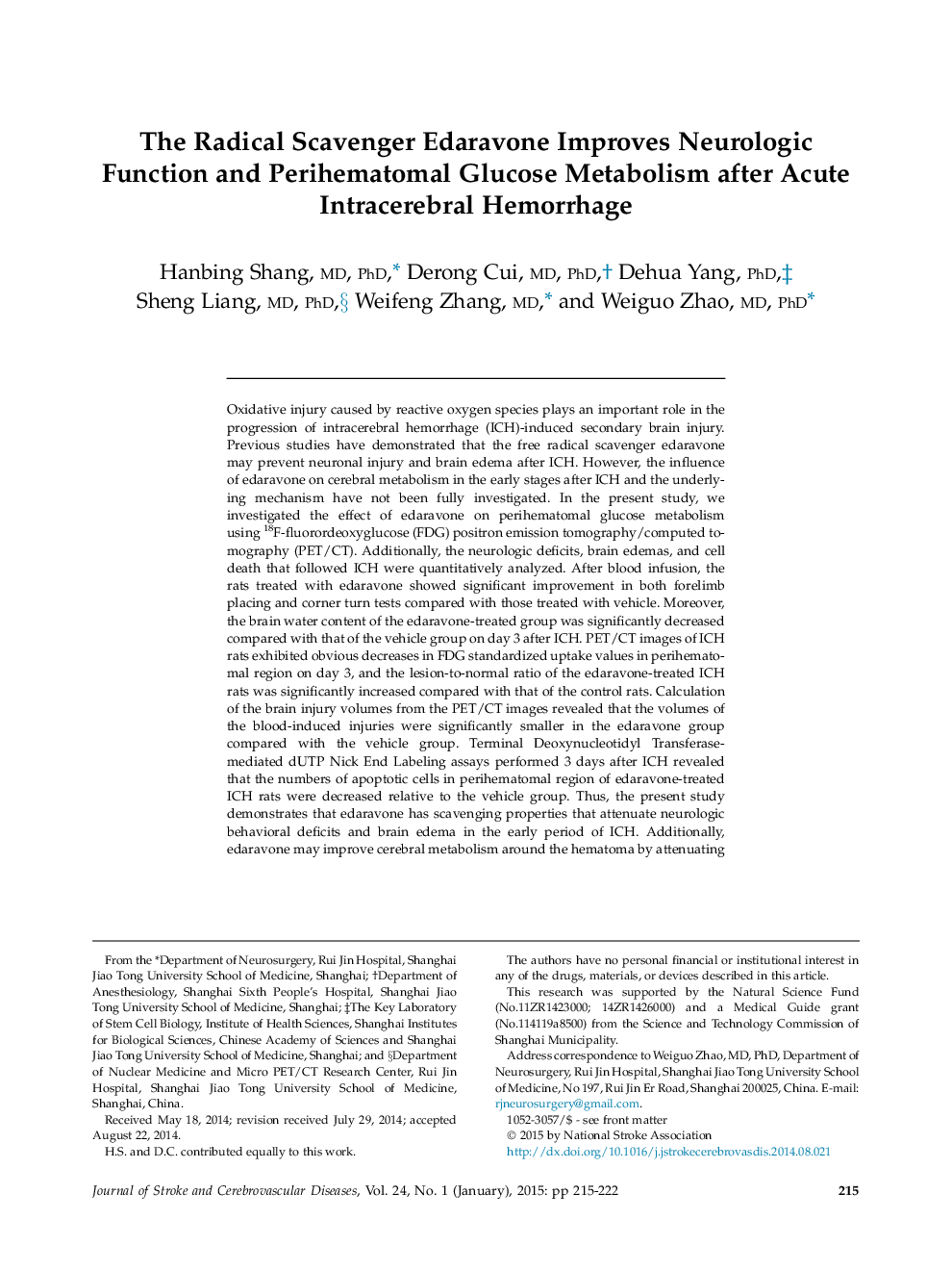| Article ID | Journal | Published Year | Pages | File Type |
|---|---|---|---|---|
| 2710334 | Journal of Stroke and Cerebrovascular Diseases | 2015 | 8 Pages |
Oxidative injury caused by reactive oxygen species plays an important role in the progression of intracerebral hemorrhage (ICH)-induced secondary brain injury. Previous studies have demonstrated that the free radical scavenger edaravone may prevent neuronal injury and brain edema after ICH. However, the influence of edaravone on cerebral metabolism in the early stages after ICH and the underlying mechanism have not been fully investigated. In the present study, we investigated the effect of edaravone on perihematomal glucose metabolism using 18F-fluorordeoxyglucose (FDG) positron emission tomography/computed tomography (PET/CT). Additionally, the neurologic deficits, brain edemas, and cell death that followed ICH were quantitatively analyzed. After blood infusion, the rats treated with edaravone showed significant improvement in both forelimb placing and corner turn tests compared with those treated with vehicle. Moreover, the brain water content of the edaravone-treated group was significantly decreased compared with that of the vehicle group on day 3 after ICH. PET/CT images of ICH rats exhibited obvious decreases in FDG standardized uptake values in perihematomal region on day 3, and the lesion-to-normal ratio of the edaravone-treated ICH rats was significantly increased compared with that of the control rats. Calculation of the brain injury volumes from the PET/CT images revealed that the volumes of the blood-induced injuries were significantly smaller in the edaravone group compared with the vehicle group. Terminal Deoxynucleotidyl Transferase-mediated dUTP Nick End Labeling assays performed 3 days after ICH revealed that the numbers of apoptotic cells in perihematomal region of edaravone-treated ICH rats were decreased relative to the vehicle group. Thus, the present study demonstrates that edaravone has scavenging properties that attenuate neurologic behavioral deficits and brain edema in the early period of ICH. Additionally, edaravone may improve cerebral metabolism around the hematoma by attenuating apoptotic cell death after ICH.
